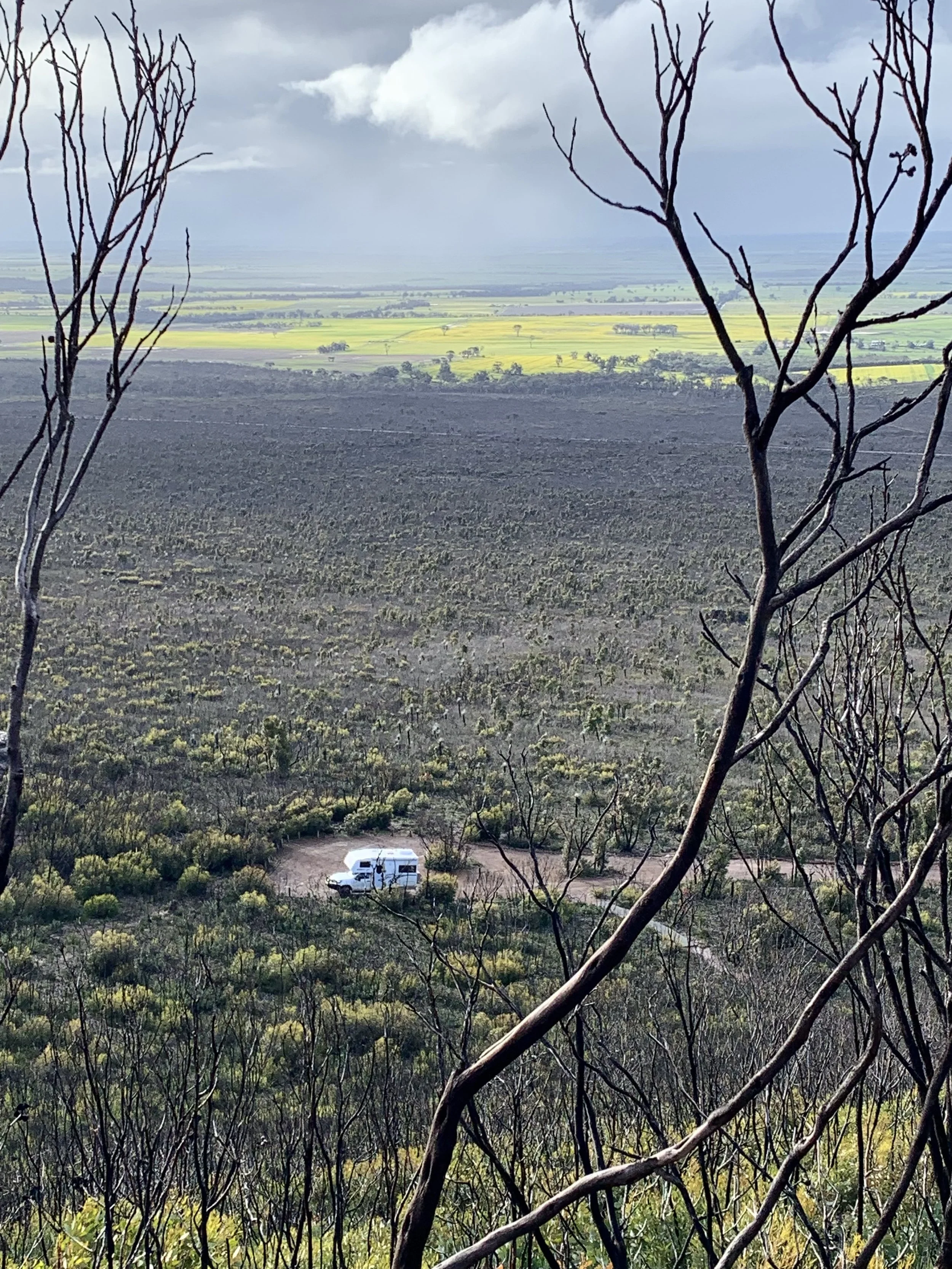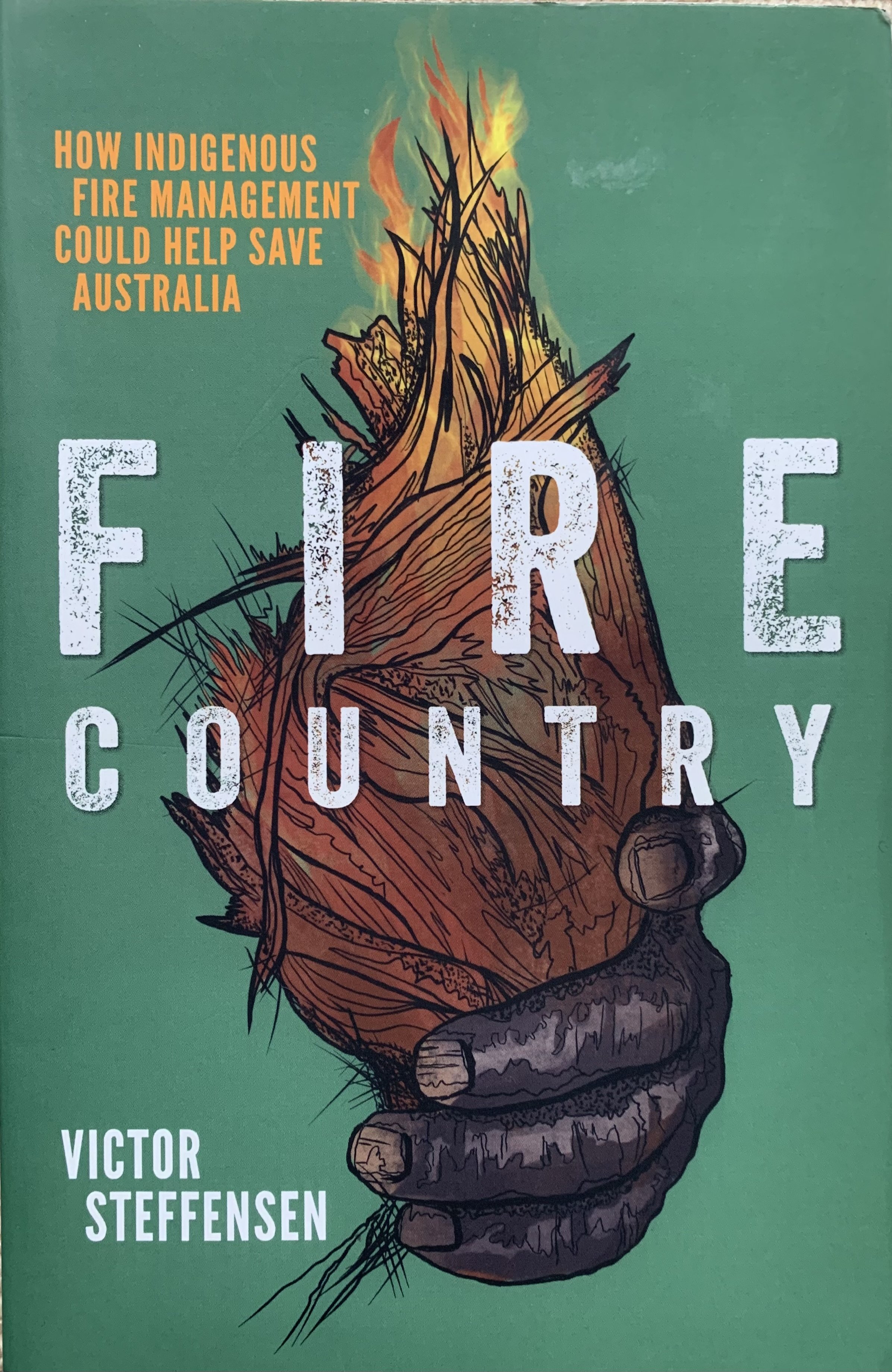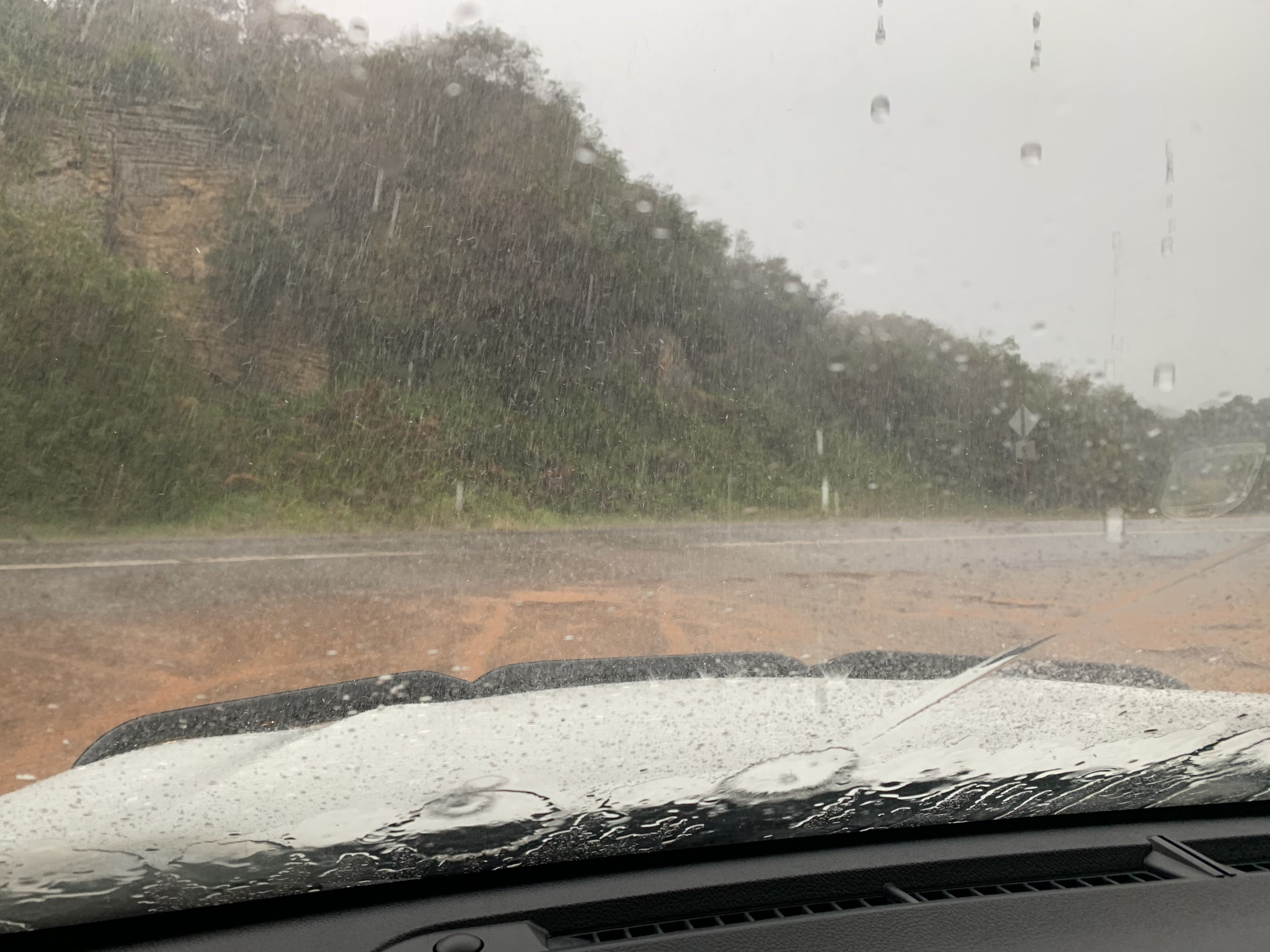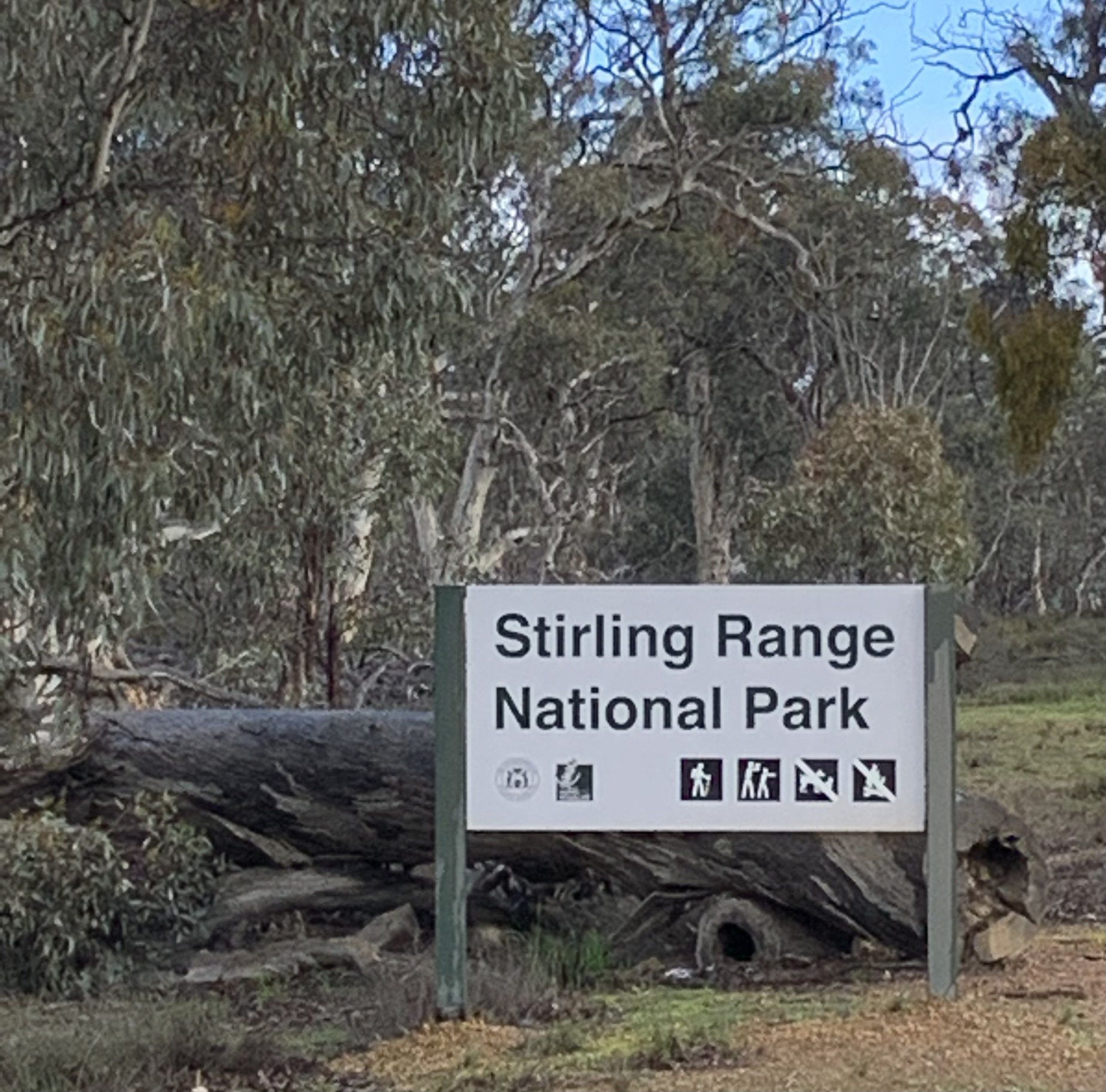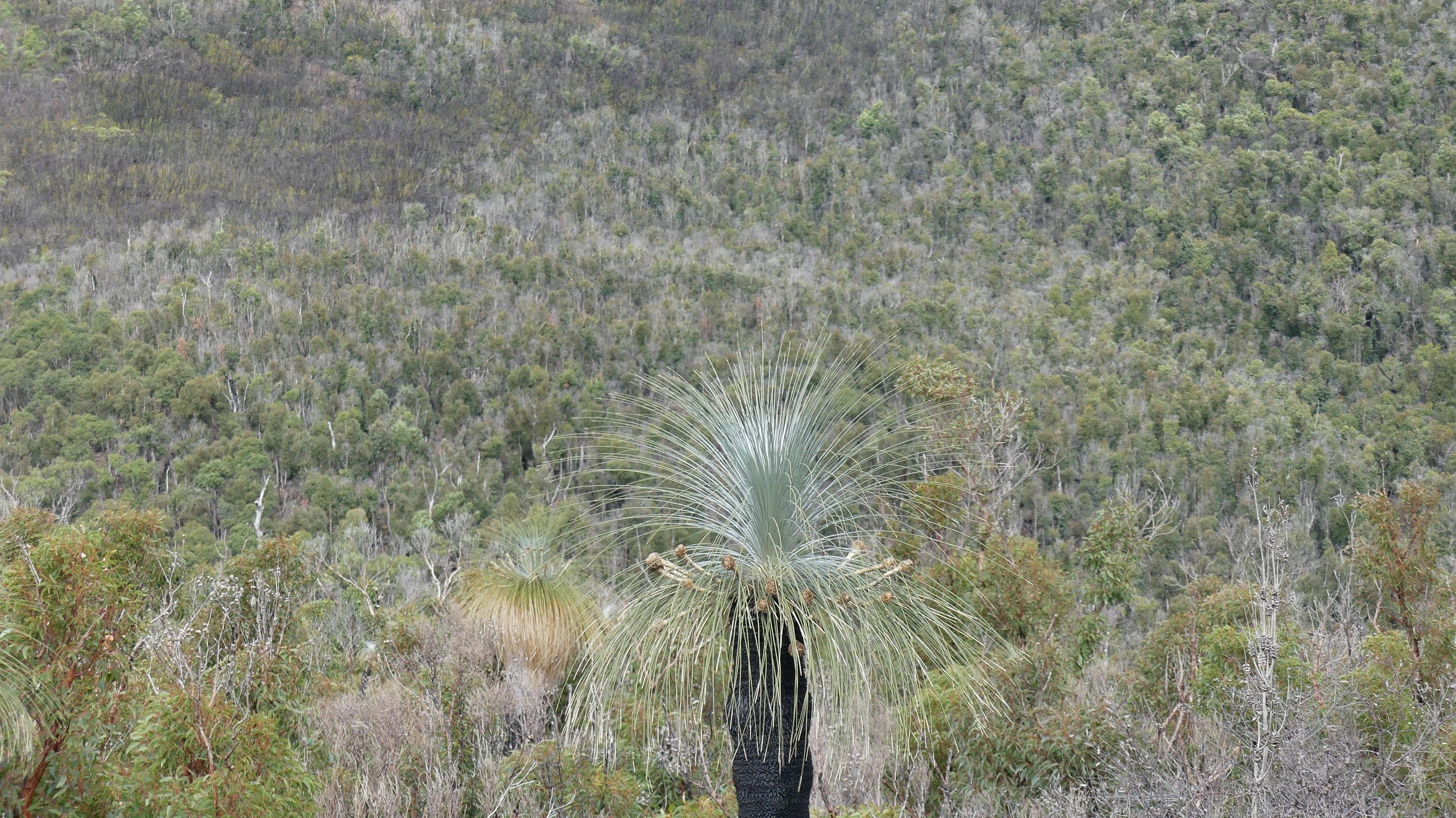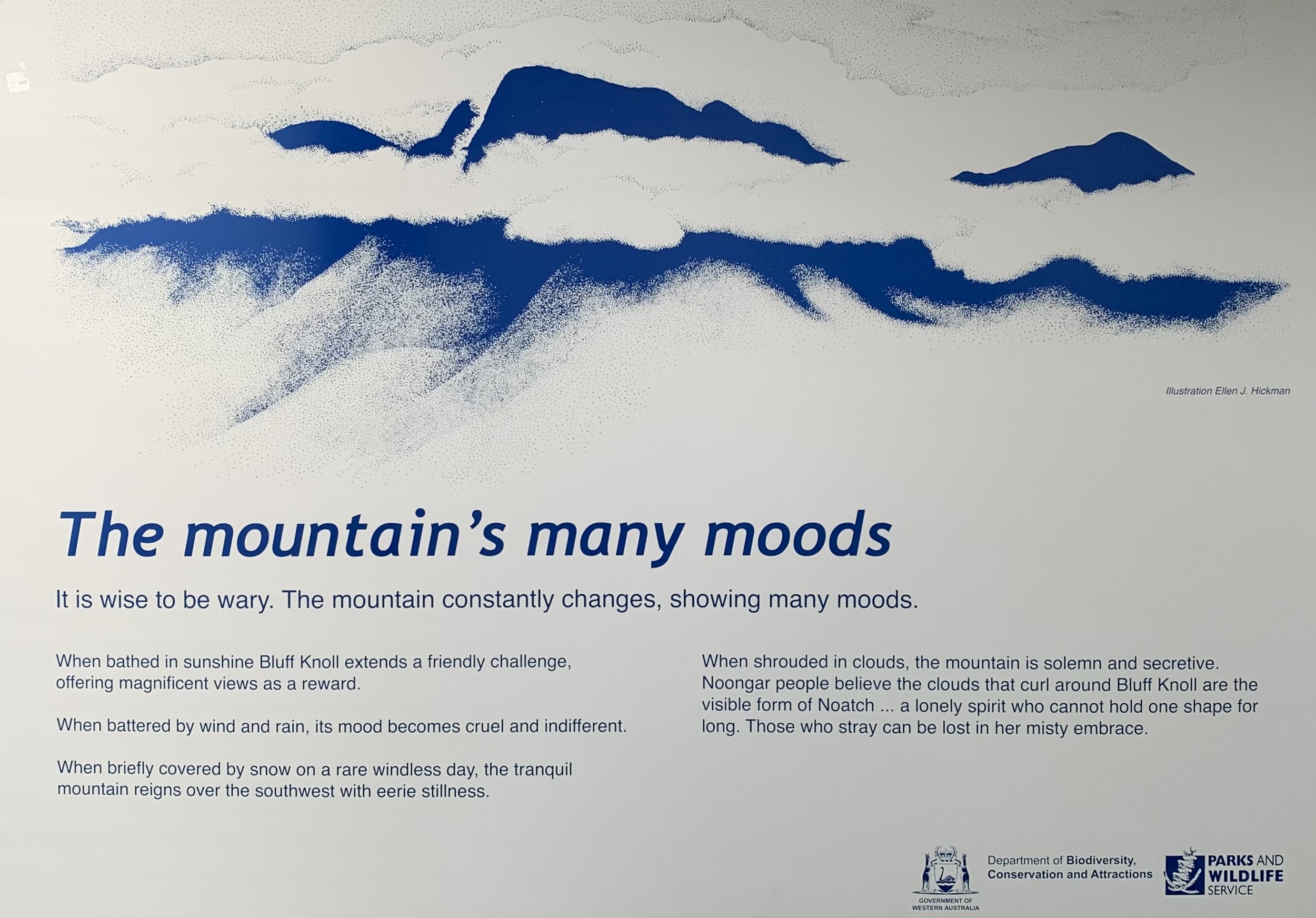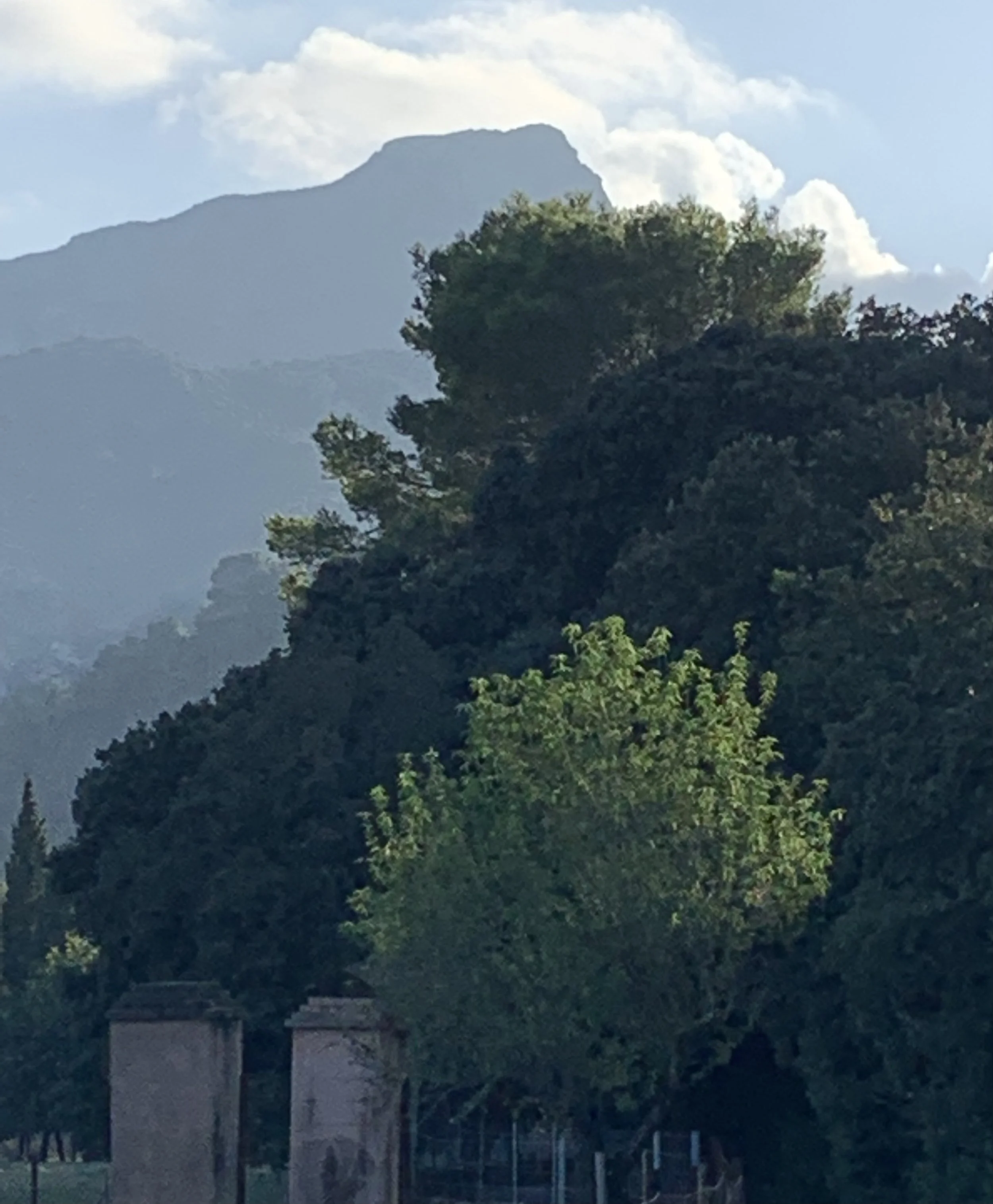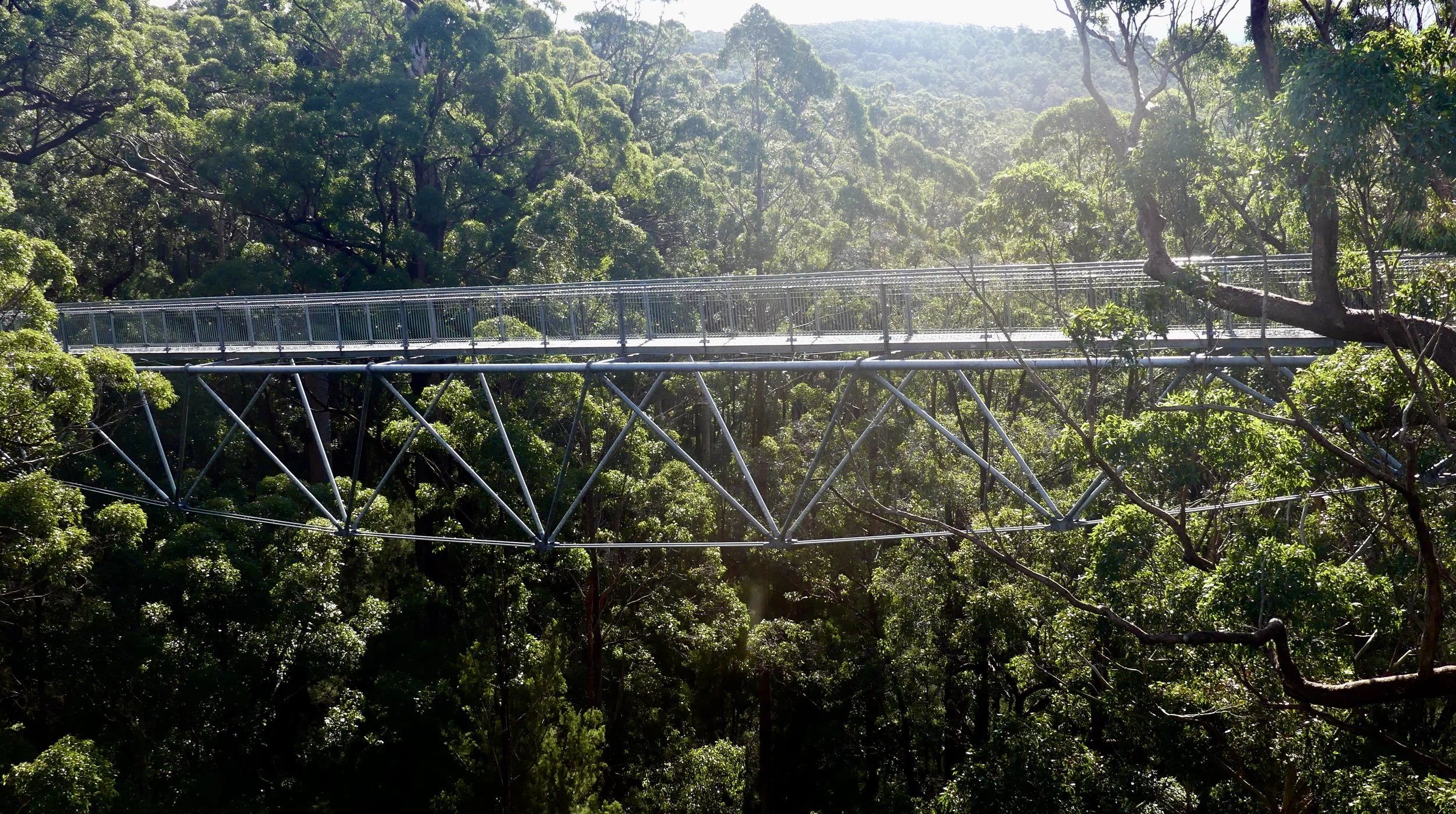40 days
We first came to this part of the world in 2006, to the Margaret River wineries and the spectacular D’Entrecasteaux National Park. (No blog in those days.) So we knew all about names ending in -up: Yallingup and Balingup; Manjimup and Munglinup; Jerdacuttup and Jerramungup; Jacup and Pingrup… Only now had I bothered to find out that the ‘-up’ suffix means ‘place of’ or ‘meeting place’ in the local Nyangar (Noongar) dialect.
Denmark River in fleeting sunshine
An important perspective
Day 38: Denmark. We visited the tingle forests on the way from Albany to Denmark, an attractive little town with lots of trees, a full river and a great bookshop that doubled as an environment centre. I bought Fire Country by Indigenous land management expert Victor Steffensen, an odd choice given our rain-soaked context. The sharing of cultural burning practices – as opposed to the land-clearing infernos created by early European settlers – will be of ever greater importance to environmental restoration and landcare in a climate-changed world.
We tried hard to venture out in defiance of the weather to visit Ocean Beach Lookout over what would have been the sandbar at the outlet of the Denmark River into Wilson Inlet. But water and waves were every which way, and we couldn’t make out what was going on. It rained so hard the water fell in exclamation marks. It was time to give up and return to camp for bowls of comforting pasta.
‘It rained so hard the water fell in exclamation marks’
Day 39: Denmark to Gnowangerup. What a huge debilitating drag the rain had become: it poured all night and then continued by day. We became adept at timing dashes between Van and shower block by checking the radar. What kind of waterworld was this? We couldn’t wait to get north, although there was no real prospect of improvement for days.
We set out late for the western access to Stirling Range Drive. The road was unsealed before we got into the National Park, and I imagined it felt a bit slippery. We noticed an old Kombi van up ahead, stopped in what looked liked the middle of the track but in fact was a river crossing. We slowed right down and approached with caution in case it had been abandoned. We flashed our lights a couple of times, and slowly the back door opened: a young man emerged to explain they were stuck but a farmer was coming to tow them out. He assured us they were OK and we couldn’t help further.
We reckoned we could have squeezed past the Kombi, but to what unknowns up ahead? For me this was curtains on a western approach to the Stirling Range National Park. We had told no one where we were going – the golden rule of remote travel – which was particularly stupid given dire weather and inhospitable conditions. We knew from a call I made to the Parks Department that they were not checking our route following the previous day’s rain storm. My feet were getting colder by the minute. My friend wasn’t happy for a different reason: ‘We’ll never get to put The Van through it’s paces’, he cried. I was temporarily relieved to turn around, but it was a long detour in the wrong direction, through Vale of Kalgan south of the National Park in order to link up with Chester Pass Road north up to the other end of Stirling Range Drive. We were halfway through the Park before I realised we were even in it. So we hadn’t stopped to photograph a panorama of purple peaks across the Range. Was I cross? I tried to bury my fury.
The weather deteriorated so there was little point striking out along Stirling Range Drive from the east. We decided to cut our losses and head for Bluff Knoll instead. There was a steep ascent – No caravans, the sign said – and it was damn cold. We grabbed a quick sandwich in The Van before setting off along the path to the top. We knew we wouldn’t get far, but the weather closed in faster than expected and we had to run for cover back to The Van.
Going up
Dashing down
We next tried our luck at Mt Trio, determined to walk up something that wasn’t shrouded in mist or being pelted by hard rain. This time we were beaten by time and deep, steeply rising steps. We got far enough up to take pictures of the teeny tiny Van below (top of page), a view that became one of my favourites of the trip.
Whence we came, now sunlit
Later on in Gnowangerup, since we hadn’t succeeded in walking even part-way up any Stirling Range peaks, we decided to walk a kilometre or so to the pub to eat. We sat in the public bar, and soon three old geezers started chatting to us. In what was at the time an overwhelmingly Labor state, we happened upon rusted-on Liberal farmers who just loved Prime Minister Scott Morrison: what a guy! Not sure why, but the pub was closing at 8:30, and we had the walk back to camp, both of which were probably a blessing in disguise once we realised the company we were keeping.
We’d been 40 days on the road. Moving on had become a way of life that I neither questioned nor bemoaned. Forty days seemed neither longtime nor fleeting, which was slightly odd. I put it down to having had to change so many plans that we no longer dwelt upon timeframes, but made the most of any moment. Sure, there’d been loadsa rain, but ahead lay wave-shaped rocks and wildflowers.

